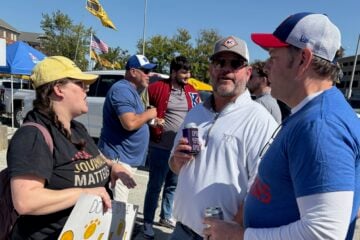Greater Public relaunches tool to help stations with online fundraising

Greater Public is relaunching a tool to help stations make decisions about digital fundraising.
The Online Revenue Detector includes 12 questions to help stations assess their digital fundraising practices and makes recommendations for improvement. Greater Public, a membership organization that helps stations with marketing, development and business strategies, is updating the Detector with additional questions about mobile fundraising.
The idea for the ORD grew out of the Digital Readiness Council, which Greater Public convened in 2015 to help public media leaders lay groundwork for boosting digital revenue. The effort brought together people from both within and outside of public media to clarify the foundational work stations need to do to improve online fundraising and better serve members, said Melanie Coulson, executive director for member station services at Greater Public. Participants expressed an interest in understanding how fundraising in public media compares with other nonprofits.
Consultant Dick McPherson, CEO of New Donor Strategies, interviewed a variety of stations and other nonprofit media outlets to learn about big-picture issues, such as where stations need support and in which areas they want benchmarks. Regardless of size or the sophistication of their fundraising operations, stations shared an interest in tactical foundational work, such as getting a better handle on email fundraising, list-building and streamlining online giving.
ORD’s questions require a response of “yes,” “no” or “don’t know.” “We felt it was important to say to stations, ‘You don’t have to know every detail,’” McPherson said. But ORD’s responses do encourage more tracking.
For example, the first question asks whether the station’s email list grew by more than 11 percent last year, the average rate for nonprofit organizations.” If “yes,” the tool provides detailed steps for calculating the value of a subscriber. If “no,” it offers tips for encouraging new email sign-ups. And if the answer is “don’t know,” it provides guidance on how to start measuring and interpreting email list growth.
“Wherever you are, we’ll be able to recommend some next steps,” McPherson said.
More than 100 stations have participated in the ORD since the tool launched a year ago, but not all have completed its 12 questions, Coulson said. Of them, 54 percent answered “no” to the first question, while 24 percent checked “don’t know.” The tool is offered to Greater Public members.
The response indicated “we need to do some serious education around why you need to keep pulling that list and keep track of it,” Coulson said.
McPherson and other consultants and station leaders will hold a two-part mini-workshop on digital fundraising next week that stems from Greater Public’s experience with ORD. The first part, focused on email fundraising, will cover three key areas: list segmenting and targeting, frequency and strategy, and the difference between spontaneous experimentation and longer-term testing of techniques. The workshop will be held July 7 at the Public Media Development and Marketing Conference in San Francisco.
“While stations need to have a strategy and be diligent and focused on their efforts, you can afford to be experimental in digital because the potential is substantial, but the cost of failure is typically not very high,” McPherson said.
The second part of the workshop will focus on online donations and cover other tactics and areas with potential for testing. Representatives from M+R, a consulting group focused on nonprofits, will discuss broader trends in digital fundraising based on a national benchmarking study released in April.






